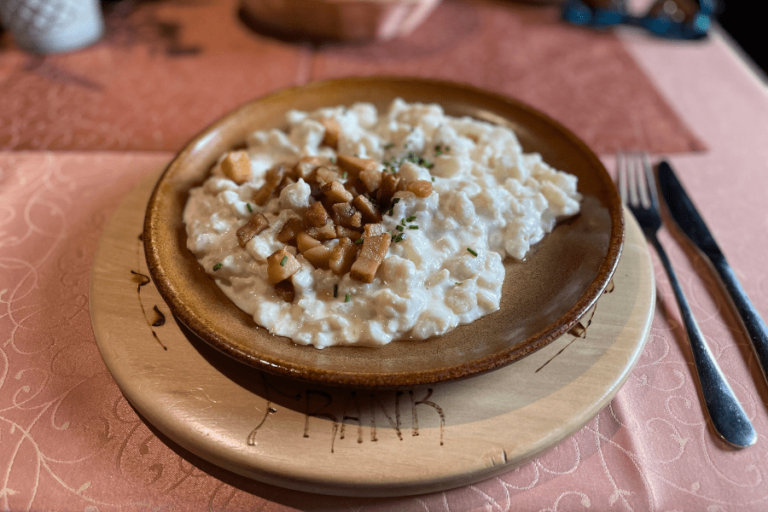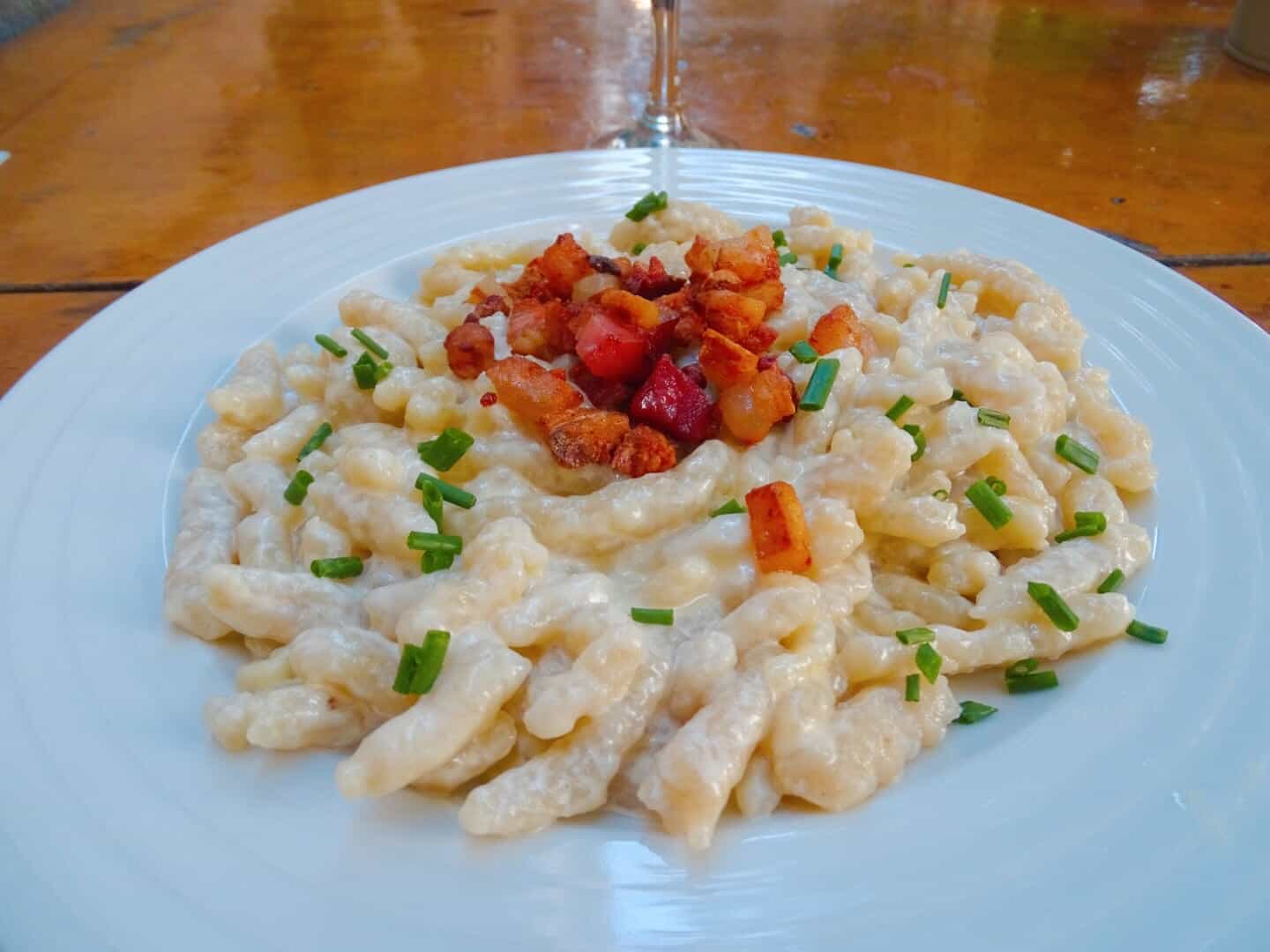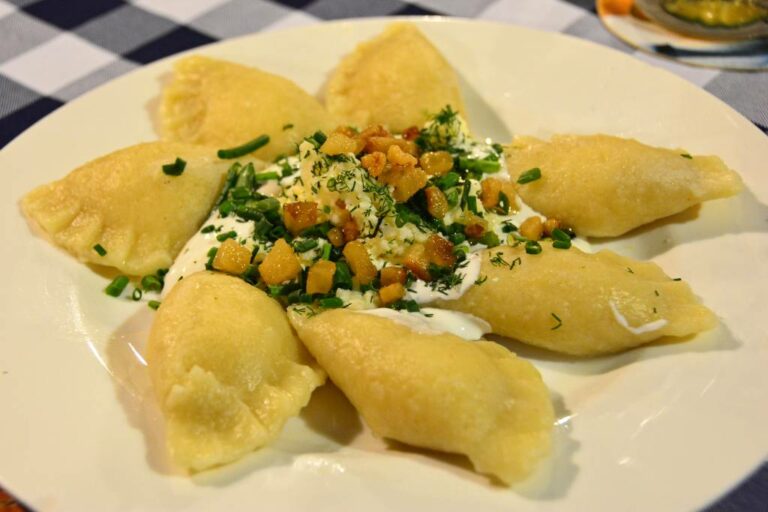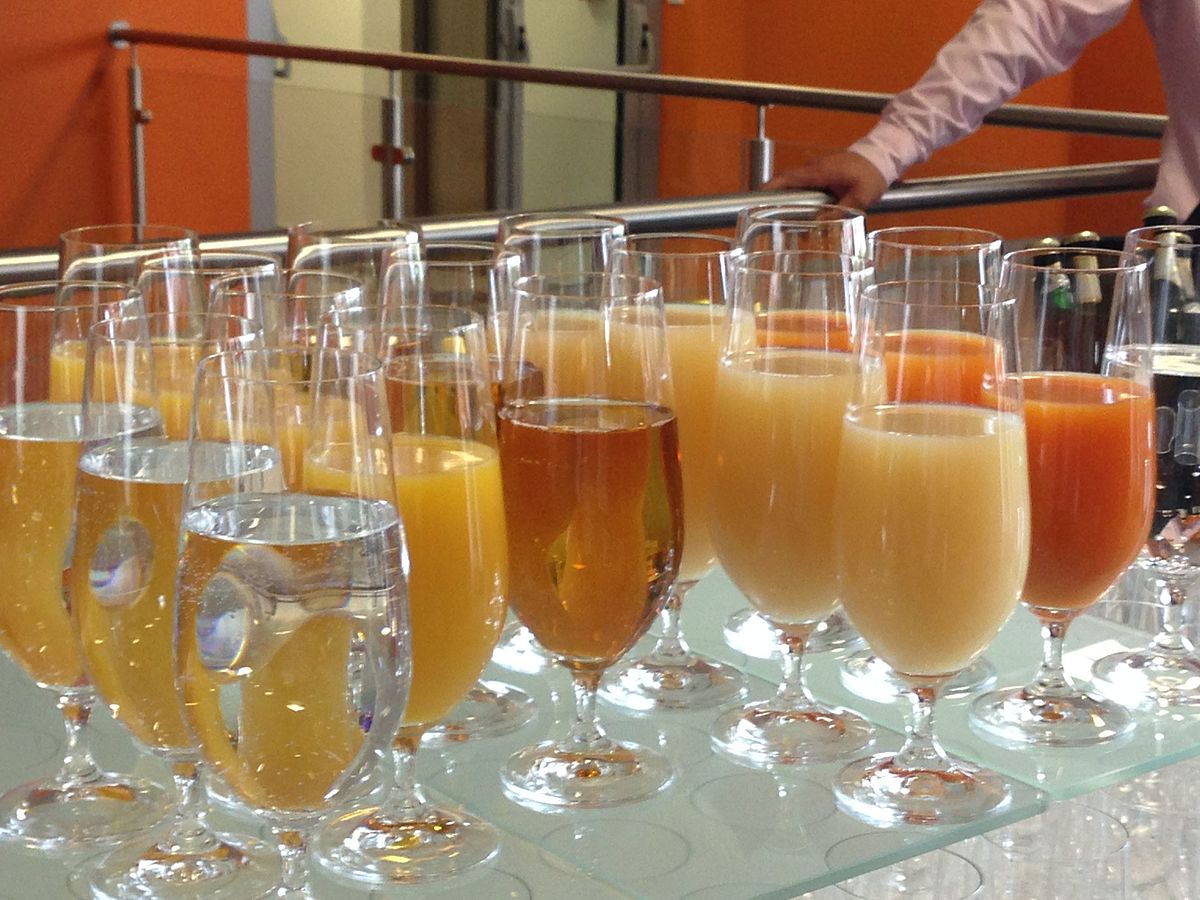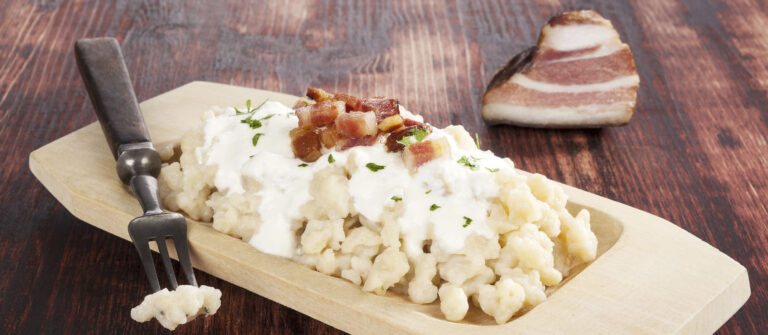Introduction: Exploring the Culinary Delights of Slovakia
Slovakia is a landlocked country located in Central Europe, known for its rich history and cultural heritage. The country has a diverse cuisine influenced by its neighboring countries, such as Hungary, Austria, and the Czech Republic. Slovak cuisine is characterized by hearty meat dishes, stews, soups, and delicious desserts. In this article, we will explore some of the must-try Slovak dishes that you should not miss on your trip to Slovakia.
1. Bryndzové halušky: A Unique Slovak Cheese Dish
Bryndzové halušky is a traditional Slovak dish made with potato dumplings (halušky) and bryndza, a local sheep cheese. The dumplings are made by grating potatoes and mixing them with flour, egg, and salt, forming small dumplings. The dish is then topped with bryndza cheese, which is crumbled and mixed with fried bacon and onions. The result is a unique and hearty dish that is perfect for cold winter days. Bryndzové halušky is considered the national dish of Slovakia and can be found in many restaurants throughout the country.
2. Kapustnica: A Hearty Slovak Soup for Cold Winter Days
Kapustnica is a delicious Slovak soup made with sauerkraut, smoked meats, and dried mushrooms. The soup is flavored with paprika, garlic, and caraway seeds, giving it a distinct and hearty flavor. Kapustnica is usually served during Christmas and other special occasions in Slovakia. The soup is often accompanied by a slice of bread or dumplings. Kapustnica is a perfect dish for cold winter days, as it warms you up and fills you with energy.
3. Cigánska pečienka: A Classic Slovak Pork Dish
Cigánska pečienka is a classic Slovak dish made with pork tenderloin and paprika. The pork is marinated in paprika, garlic, and onions, giving it a rich and delicious flavor. The dish is then grilled and served with roasted potatoes, a salad, and a slice of bread. Cigánska pečienka is a popular dish among locals and visitors alike, and it is often served in traditional Slovak restaurants.
4. Žemlovka: A Sweet and Comforting Slovak Dessert
Žemlovka is a sweet and comforting Slovak dessert made with bread, eggs, milk, and apples. The bread is soaked in milk, mixed with eggs, and layered with sliced apples. The dish is then baked in the oven until golden brown. Žemlovka is a traditional Slovak dessert that is often served during special occasions, such as Christmas and Easter. The dish is usually served with whipped cream or vanilla sauce, adding a creamy and sweet touch to the dish.
5. Lokše: A Simple and Delicious Slovak Potato Pancake
Lokše is a simple and delicious Slovak potato pancake made with grated potatoes, flour, and salt. The mixture is then fried in oil until golden brown. The pancake can be served with a variety of toppings, such as sour cream, cottage cheese, or jam. Lokše is a popular street food in Slovakia, and it can be found in many food stands and markets throughout the country. It is a perfect snack or light lunch that will satisfy your hunger and give you a taste of Slovak cuisine.
Conclusion: Discovering the Rich Flavors of Slovak Cuisine
Slovak cuisine is a hidden gem that is waiting to be discovered. From hearty meat dishes to delicious desserts, Slovak cuisine offers a variety of flavors that will please your taste buds. Bryndzové halušky, Kapustnica, Cigánska pečienka, Žemlovka, and Lokše are just some of the must-try Slovak dishes that you should not miss on your trip to Slovakia. So pack your bags and get ready to explore the rich flavors of Slovak cuisine!

